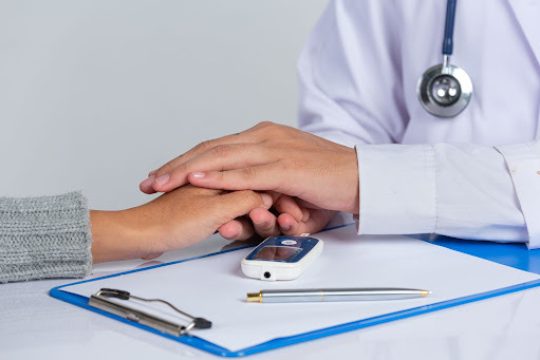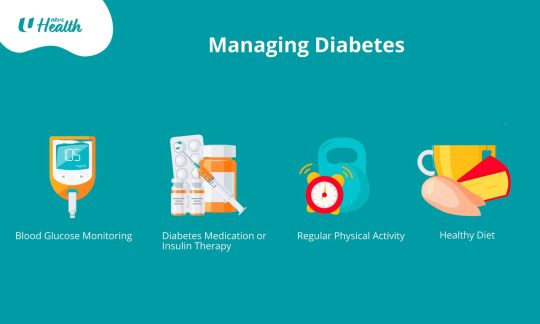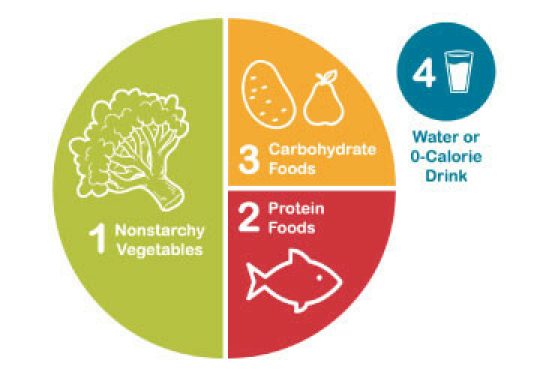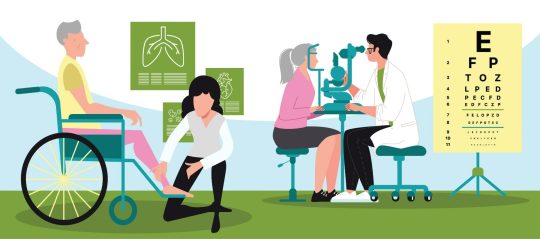Diabetes in Singapore
In Singapore, over 400, 000 people are living with Diabetes Mellitus, known commonly as Diabetes. By 2050, if nothing is done, it is estimated that about one million Singaporeans will be living with diabetes.1
What is diabetes
Diabetes is a chronic health condition that affects how the body turns food into energy. Described as a metabolic disease, diabetes is characterised by elevated levels of blood glucose (or blood sugar), which over time, if untreated can lead to more detrimental health problems, like heart disease and kidney failure. This is because high blood glucose levels can damage your blood vessels and nerves that control your heart.
In a healthy body, insulin helps blood sugar enter the body’s cells so they can be stored or used for energy. As insulin is crucial for metabolism, diabetes occurs when the body does not have enough insulin to regulate the blood sugar. The problem of poor blood circulation arises because high blood sugar will gradually cause severe damage to the blood vessels and nerves, reducing the supply of blood and oxygen throughout the body.
To help you understand more about diabetes, this article will explain the different aspects of diabetes, such as two types of diabetes: type 1 and type 2 diabetes, risk factors, symptoms, screening methods, treatments and important procedures like diabetic retinal photography and foot screenings. Finally, we'll discuss the importance of having a healthy diet and lifestyle to prevent this chronic disease from causing irreversible damage to our bodies.
Jump to the following sections:

Types of diabetes
Type 1 Diabetes
There are mainly two types of diabetes which seniors might develop. Type 1 diabetes is commonly referred to as insulin-dependent diabetes and usually arises primarily from genetic factors. In this instance, the body's immune system attacks and destroys insulin-producing beta cells in the pancreas, preventing the body from producing insulin. Type 1 patients do not have the ability to produce insulin so glucose builds up in the bloodstream and causes high blood sugar levels.
Patients living with type 1 diabetes require daily insulin injections to help move the glucose from the bloodstream into the body’s cells so blood sugar levels remain stable.
Type 2 Diabetes
This is the most common type of diabetes for older adults and type 2 diabetes is due to chronic insulin resistance which is usually a case of concern for an overweight person who has a BMI of 23.0 kg/m2 or higher. Typically, for someone who is overweight, their body is under constant stress due to the extra weight. Over time, a protein called cytokines produced by the body to cope with the stress ends up blocking the signals of insulin receptors and which in turn leads to elevated blood glucose levels.
While the disease can progress from prediabetes to type 2 diabetes, early detection can help with combating the disease. Prediabetes is reversible, especially if the individual makes significant changes to change their diet and adopt a physically active lifestyle by exercising regularly to lose weight. However, there is a high chance that uncontrolled diabetes will cause other health problems such as hypertension, stroke, blindness and even lower body limb amputations.
There is also a connection between Type 2 diabetes and high blood pressure, a common chronic illness seniors in Singapore have. Two out of every three people with Type 2 diabetes also have high blood pressure or take prescription medications to lower their blood pressure.
Both chronic illnesses can be managed through behaviour, including eating a healthy diet, exercise, weight control, and if your doctor prescribes it, medication.
Gestational diabetes
Gestational diabetes occurs during pregnancy. Women with gestational diabetes are at an increased risk of complications during pregnancy and at delivery. These women and possibly their children are also at increased risk of type 2 diabetes in the future.
Diabetes Symptoms
The first warning signs of diabetes include feeling more thirsty than usual, extreme fatigue, blurry vision and having slow-healing sores. The onset of symptoms may be sudden for people with Type 1 diabetes, while people with Type 2 diabetes may experience these symptoms gradually. Unfortunately, most people with early diabetes do not experience these symptoms, and by the time they develop, diabetes is usually already severe and may have started to cause damage to some organs. Severe complications can be disabling and even life-threatening. This is why there is a need for screening via a blood test.
The common symptoms associated with diabetes include:
- Frequent urination: When blood sugar levels are high, the kidneys work to eliminate the excess glucose from the body, resulting in increased urination.
- Unexplained weight loss: Particularly for individuals with type 1 diabetes, as the body is unable to properly utilise glucose for energy, it starts burning fat and muscle for energy, causing a reduction in overall body weight.
- Constant fatigue: Due to the body's inability to convert glucose into energy effectively, high blood sugar levels can lead to a feeling of tiredness and lethargy throughout the day.
- Increased hunger: No matter how much glucose is obtained from food, it does not get into cells as it should, and the body is deprived of energy. This results in the constant hunger or craving for food as the body’s cells are “starved”, triggering one to overeat.
- Blurred vision: High blood sugar levels can affect the lenses of the eyes, leading to blurred vision.
- Slow healing of wounds: Diabetes can impede the body's natural healing process, making it more difficult for wounds to heal.
- Foot complications: One could lose feeling in one's foot as it is common for diabetes to cause nerve damage. As a result, a simple infection may lead to a more serious condition such as gangrene and foot ulcers.

Detect diabetes early
The best way to detect diabetes early is to get regular check-ups and blood tests with a healthcare provider. When you head to the doctor to find out if your blood sugar levels are in a healthy range, your doctor might order a blood glucose test for you. Such tests help doctors diagnose and monitor diabetes. The tests are non-fasting or fasting. Three tests to help measure your blood glucose levels:
Non-fasting Blood Test (HbA1c)
HbA1c is a blood test that provides an indication of your average blood glucose/sugar levels over the past three months.
Fasting Blood Glucose (FBG) Test
This is a blood test that requires a fast of at least 8 hours before the blood sample is taken and is usually done in the morning.
Oral Glucose Tolerance Test (OGTT)
This oral glucose tolerance test consists of two blood tests; the first administered after an 8-hour fast, and the second 2 hours after consuming a beverage containing 75g of glucose - this sugary beverage will be provided by the clinic administering the test .

How to manage diabetes: Two essential ways
If you are diagnosed with diabetes, seek appropriate support and treatment for diabetes management. You are likely to be advised to check your blood glucose level at least once a day as you need to ensure you keep your blood sugar levels within a target range. You may be prescribed oral diabetes medications or insulin injections to help you maintain your blood sugar levels within a healthy range. Your doctor might also advise you on the usage of a continuous glucose monitor for continuous glucose monitoring.
For mild cases however, you may not be on oral medication or insulin injections yet, a healthy lifestyle could help to manage diabetes - just with healthy eating and maintaining a healthy weight.
Eat right
It is important to switch to healthier options to reduce sugar in your diet. Choose nutrient-rich foods with minimal added sugar and moderate amounts of oil. Simple changes can dramatically reduce the amount of sugar you consume in your diet.
It could be quite natural to drink soft drinks, fruit juices and milkshakes, which are a huge contributor to the amount of added sugar in our diets. Try switching to plain water and opt for drinking coffee or tea without sugar. If you find the taste of water too bland, why not consider being creative and adding some fruit or herbs like lemon or mint leaves for infused flavours without the sugar.
Read the nutritional information panel when you are shopping for groceries and look out for food products with the Healthier Choice Symbol as they are generally lower in sugar, sodium, and saturated fat. Sometimes, food that we do not consider to be sweet may also contain a large amount of sugar, such as a serving of tauhu goreng or mee siam. When eating out or buying takeaways, avoid dishes that have sauces such as sweet and sour dishes, curry sauce or even salad cream, which can also be high in sugar.
Weight loss occurs when the calories we consume are less than the calories we burn. To start on a weight loss journey, cut down your calories first by avoiding alcohol, fried foods and reducing your carbohydrate intake. Instead, add more vegetables and protein to your daily diet.
Avoid snacking and set regular times for your three meals (breakfast, lunch and dinner) as this will help your metabolism be engaged at optimal levels all day long. Focus on a balanced diet based on the portions in the healthy plate model. Losing weight may not be difficult even if you eat out, as various stalls offer vegetable and protein options.

The plate method recommends:
- Half plate of fruit and vegetables high in dietary fibre
- Quarter plate with lean protein such as poultry, lean meat or fish high in Omega-3 like salmon
- Quarter plate with wholegrains which can help with weight management by keeping you full longer and reduce the need for snacking. Unlike refined grains like white rice, or noodles, wholegrains are rich in vitamins, minerals and dietary fibre. This way, you can control your portion sizes and avoid overeating, while managing your blood sugar levels.
The above are also steps you could take to lower your risk of developing diabetes and other health problems.
Exercise to manage diabetes
According to Harvard Medical School, exercise lowers blood glucose levels and boosts one’s body's sensitivity to insulin, countering insulin resistance2. Consider incorporating 30 minutes of physical aerobic exercise, at a moderate intensity, 5 times a week into your schedule. On average, 10,000 steps is about the equivalent of burning 500 calories.
The Singapore Physical Activity Guidelines (SPAG) by Sport Singapore (SportSG) and the Health Promotion Board (HPB) sets out 5 tips for older adults ages 65 and above:
- Incorporate simple strength training exercises such as resistance band exercises3 when watching your favourite shows.
- Walk or play sports with your family and friends; this is a great way to be active while spending quality time with your loved ones.
- Make use of outdoor fitness equipment around your community spaces or take brisk walks around the neighbourhood's parks and enjoy the green spaces around you. There is growing evidence that shows that being surrounded by nature also helps improve one's mental wellbeing and stress levels, which also impact and help maintain your blood sugar level.
- Engage in varied multi-component physical activity at home or in a structured group setting, which can combine aerobic, muscle-strengthening, and balance training into a session.
- Play and try different sports with friends at publicly available sports facilities.
For a more disciplined schedule, visit one of NTUC Health’s senior gyms and seek guidance from our qualified and experienced trainers, or join our senior-friendly fitness classes which combine four types of exercise (endurance, strength, balance, and flexibility).

Managing diabetes complications: Diabetic foot screening and retinal photography
Diabetic foot screening
A common complication of diabetes in Singapore is the narrowing of blood vessels in the lower limbs and impaired sensation in the lower limbs. Dr. Darren Chen from the NTUC Health Family Medicine Clinic advises diabetics to have their feet screened by a healthcare professional at least once a year. This will help to identify potential issues and reduce the risk of amputation.
Diabetic foot screening4 generally involves a series of assessments and cause of concerns will be if there is:
- Any nerve damage resulting in the feet turning black or having a bad odour
- Open sores or wound resulting from poor blood circulation
- Changes in the foot structure or shape
Diabetic Retinal Photography
If you are diabetic, it is important to get your eyes tested annually to ensure diabetic retinopathy is detected early. Diabetic retinopathy is the eye condition that affects the blood vessels in the retina and causes vision loss because of prolonged periods of high blood sugar levels.
The damage to the eyes starts when sugar blocks the tiny blood vessels that go into the retina, causing them to leak fluid or bleed. For those with diabetic retinopathy, they will experience symptoms such as:
- Floaters
- Blurred vision
- Double vision
- Eye pain or redness
- Difficulty seeing in the dark
Damage caused by diabetic retinopathy is likely to be permanent and irreversible. Screening will help detect early retinal changes and referrals can be made to eye specialists for interventions in order to reduce the risk of deterioration and blindness.

Summary
Key causes for diabetes can arise due to the lack of physical activity, high sugar intake, obesity or a combination of genetic or environmental factors. While family history may put one at risk of developing type 2 diabetes, especially for type 1 diabetes patients, research shows that individuals who are obese have higher risks and are 80 times more likely to develop type 2 diabetes than a healthy adult with body mass index (BMI) within the range 18.5 to 22.9.
Diabetes occurs more frequently among older adults but it can affect individuals of all ages. If it is caught early, the diagnosis is likely to be prediabetes, which means even though there is higher than normal blood sugar level, it is not high enough for a diabetes diagnosis. At this stage, one of the most important ways to treat diabetes is to adopt healthier dietary habits, such as eliminating sugar from one's diet, and an overall lifestyle change to engage in regular physical activity to achieve permanent weight loss.
For anyone 18 years and above, it is important to go for regular diabetes health screenings once every three years as a preventive measure. This is because diabetes is a “silent” disease in its early stages and there are usually no symptoms for prediabetes.
Get regular diabetes screening
Under the Healthier SG (HSG) initiative by the Ministry of Health, older Singaporean adults 40 years and above are eligible for fully-subsidised health screenings and heavily subsidised health treatments. NTUC Health Family Medicine Clinic (FMC) is a HSG clinic and eligible individuals can enjoy fully subsidised nationally-recommended screenings which covers diabetes screening under the Screen for Life (SFL) National Health Screening Programme.
Additionally, from early 2024, Singaporeans can use their MediSave to pay the full cost of their treatment at their HSG clinic under the Chronic Disease Management Programme (CDMP) without the need for cash co-payment.
Call us at 6281 2638 for more information or leave your enquiry with the form here.
Sources
1. Ong, Y. K. (2021). Speech by Mr Ong Ye Kung, Minister for Health, at World Diabetes Day 2021. https://www.moh.gov.sg/news-highlights/details/speech-by-mr-ong-ye-kung-minister-for-health-at-world-diabetes-day-2021
2. Harvard Health Publishing. (2021). The importance of exercise when you have diabetes. https://www.health.harvard.edu/staying-healthy/the-importance-of-exercise-when-you-have-diabetes
3. Sigal, R. J. et al. (2018). Resistance bands training improved strength and glycemic control: The DARE-Bands Trial. https://www.canadianjournalofdiabetes.com/article/S1499-2671(18)30504-5/fulltext
4. Medline Plus. (2021). Diabetic Foot Exam.https://medlineplus.gov/lab-tests/diabetic-foot-exam/


